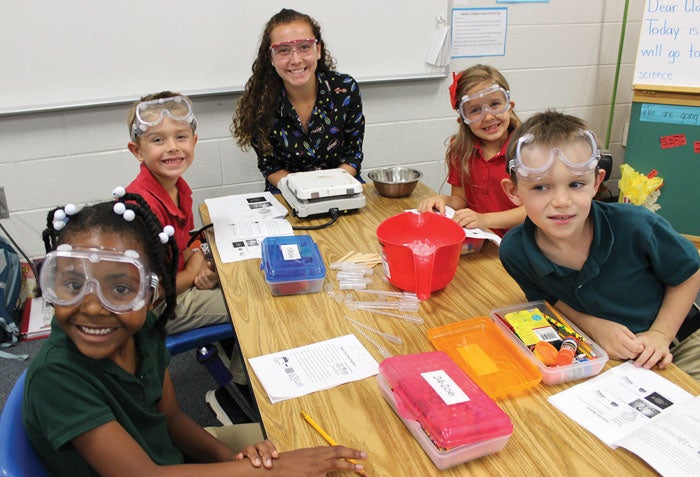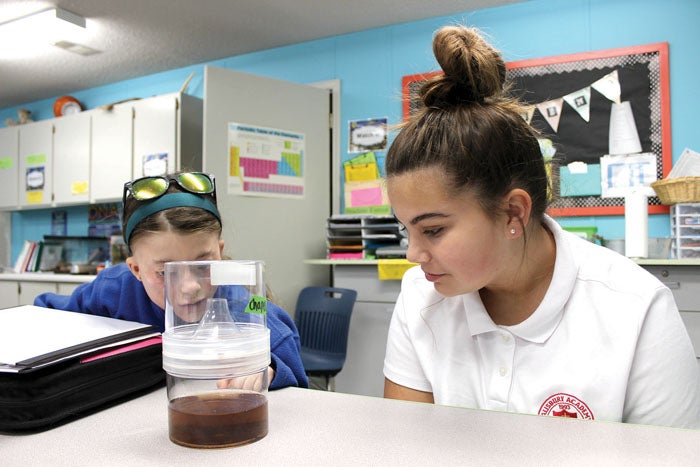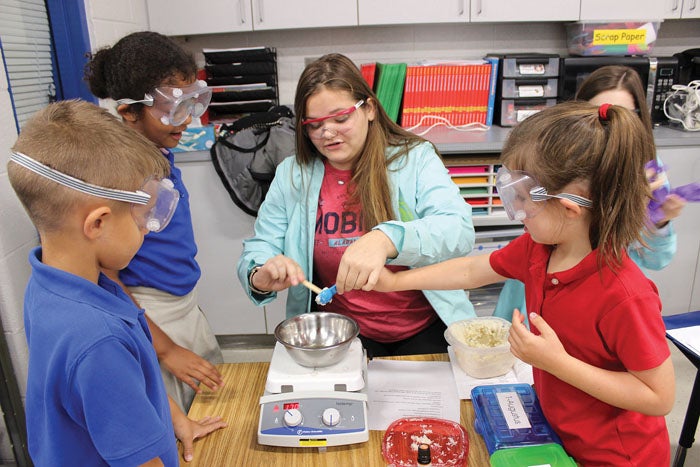Salisbury Academy-Catawba partnership sparks scientific connections
Published 12:00 am Thursday, October 25, 2018
Contributed
SALISBURY — Catawba College’s science department is bringing new angles and applications into the classrooms of Salisbury Academy’s young scientists. Over the past two weeks, first- and seventh-grade students enjoyed presentations and hands-on labs that tie directly into their science classes.
Professor ChaMarra Saner and students from her chemical calculations class at Catawba led Salisbury Academy’s first-grade students in a lab about matter through the creation of all-natural chapstick.
“We’re talking about proportions with the students today, how ingredients have to be just right, like with a cake, or things don’t work,” said Saner.
The topic complements Saner’s work with her Catawba science students. Teaching proportions and how the physical characteristics of matter change when measurements are altered is a fitting lesson for her students to take the lead on, Saner said.
Accola Hudson, a senior in Saner’s class, was eager to share her knowledge with the young students during the labs.
“I think it’s exciting. Hopefully we’re able to get the kids more interested in STEM fields, put a fire in their hearts, and hopefully they will want to pursue the field as well,” said Hudson.
Just a few days later, Salisbury Academy seventh-graders enjoyed their own foray into college concepts when Catawba’s Carmony Hartwig visited the class to build upon their discussions of symbiotic relationships.
Hartwig shared her personal field research experience with mosquitoes, specifically those found in the Catawba ecological preserve. As part of the discussion, seventh-graders talked about relationships such as mutualism, commensalism and parasitism.
“It was phenomenal to see our study of parasites applied in such a fascinating way and a great way to conclude our unit of study on ecology,” said Shea Overcash, Salisbury Academy middle school science teacher.
Catawba students and faculty enjoy teaching in local schools, both Hartwig and Saner said.
“In order to teach something, you have to learn something,” said Saner of her students’ field experience at Salisbury Academy. “I hope that from this experience they learn even more about chemistry and the different aspects of chemical calculations.”






